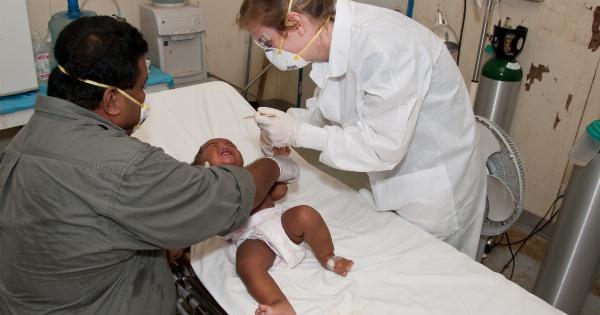Prostatitis refers to the inflammation of the prostate gland, a small walnut-shaped gland located below the bladder in men.
This condition can cause a range of symptoms, such as pain and discomfort in the pelvic area, urinary issues, and sexual dysfunction. Prostatitis can be acute or chronic, depending on the duration and severity of the inflammation.
Causes of Prostatitis
The exact cause of prostatitis is often unknown, but there are several factors that can contribute to its development. These include:.
1. Bacterial Infection
One common cause of prostatitis is a bacterial infection. Bacteria can enter the prostate gland through the urinary tract or bloodstream, leading to inflammation. The most common bacteria that cause prostatitis are Escherichia coli (E.
coli) and other bacteria commonly found in the intestines.
2. Non-Bacterial Prostatitis
In some cases, prostatitis can develop without a bacterial infection. This is known as non-bacterial prostatitis or chronic pelvic pain syndrome.
It is believed that non-bacterial prostatitis may be caused by an immune or inflammatory response in the body.
3. Risk Factors
There are certain risk factors that can increase the likelihood of developing prostatitis, such as:.
- Having a previous urinary tract infection
- Having an enlarged prostate
- Engaging in activities that put pressure on the prostate, such as prolonged sitting or cycling
- Having a history of prostate or urinary tract infections
- Having a compromised immune system
Symptoms of Prostatitis
The symptoms of prostatitis can vary depending on the type and severity of the condition. Common symptoms may include:.
- Pain or discomfort in the pelvic area, lower back, or groin
- Frequent, painful urination
- Urgency to urinate
- Difficulty emptying the bladder completely
- Blood in the urine
- Painful ejaculation
- Sexual dysfunction
- Fever and chills (in cases of acute prostatitis)
Diagnosis of Prostatitis
If you experience symptoms of prostatitis, it is important to see a healthcare professional for an accurate diagnosis. The diagnosis typically involves:.
- Medical History: The doctor will inquire about your symptoms, medical history, and any risk factors that may contribute to prostatitis.
- Physical Examination: The doctor may perform a physical examination of the prostate gland, checking for tenderness or abnormalities.
- Urinalysis: A urine sample may be collected to check for signs of infection or other abnormalities.
- Prostate Fluid Analysis: In some cases, fluid from the prostate gland may be collected and analyzed to determine the presence of bacteria or signs of inflammation.
- Imaging Tests: Additional tests, such as an ultrasound or a CT scan, may be ordered to rule out other underlying conditions.
Treatment Options
The treatment for prostatitis may vary depending on the cause and severity of the condition. Common treatment options include:.
1. Antibiotics
If the prostatitis is caused by a bacterial infection, antibiotics are usually prescribed to eliminate the infection and reduce inflammation. The type and duration of antibiotic treatment will depend on the specific bacteria involved.
2. Pain Medication
Over-the-counter pain relievers, such as nonsteroidal anti-inflammatory drugs (NSAIDs), can help alleviate pain and discomfort associated with prostatitis. In some cases, stronger pain medication may be prescribed.
3. Alpha-Blockers
Alpha-blockers are medications that help relax the muscles of the prostate and bladder neck. They can improve urinary symptoms and relieve urinary tract obstruction caused by an enlarged prostate.
4. Physical Therapy
Physical therapy techniques, such as pelvic floor muscle exercises or biofeedback, can help relieve pelvic pain and improve muscle control in the pelvic area.
5. Lifestyle Changes
Certain lifestyle changes may be recommended to manage prostatitis symptoms and reduce the likelihood of flare-ups. These may include:.
- Drinking plenty of water to promote urinary flow and flush out bacteria
- Avoiding alcohol, caffeine, and spicy foods that can irritate the bladder
- Using relaxation techniques, such as deep breathing or meditation, to manage stress
- Avoiding activities that put pressure on the prostate, such as prolonged sitting
6. Alternative Therapies
In some cases, alternative therapies like acupuncture, herbal remedies, or prostate massage may be used to alleviate symptoms of prostatitis.
However, the effectiveness of these therapies is still under debate and should be discussed with a healthcare professional.
When to Seek Medical Attention
If you experience symptoms of prostatitis, it is important to seek medical attention promptly. Additionally, you should contact your healthcare provider if:.
- Your symptoms worsen or do not improve with treatment
- You develop new or concerning symptoms
- You experience severe pain or inability to urinate
Conclusion
Prostatitis is a condition that can cause discomfort and affect the quality of life for many men. While the exact cause may be unknown in some cases, seeking medical attention is crucial for an accurate diagnosis and appropriate treatment.
By understanding the causes and treatment options available, individuals can take proactive steps to manage prostatitis and improve their overall well-being.

























